

  |
|
last modified: Tuesday, December 13, 2005 12:06 PM |
|
Bar Hopping vs. Five Star Shopping: How to attract people back to small city downtowns in metropolitan areas |
|
Sam Butler |
butlers@umich.edu |
The feat of attracting people back to downtowns is the golden fleece of economic development in Southeastern Michigan. Outside of Detroit, the inner suburbs have their own problems trying to dam the flood of people leaving for outer suburbs or different states on the whole. The city of Royal Oak seemingly has done a good job. Incorporated in 1921, and with a population of roughly 58,000 people (according to US census data), Royal Oak claims to have the appeal of a small town, but boasts a downtown that has become an entertainment magnet for people from all over Metro-Detroit. The influx of people has made real estate in downtown one of the hottest locales in Michigan, as several large-scale luxury condominium developments have begun construction in the heart of the central business district. Despite prices ranging from over $200,000 to almost $800,000, most of the condos have sold out before completion.
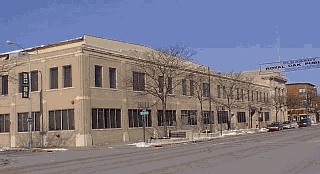
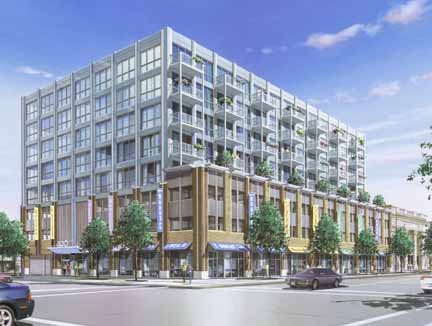
What this means is that people, who before came to Royal Oak to hang out and then left the city at the end of the evening, are now starting to stay. But why is downtown Royal Oak such a hotspot? Perhaps the youth-oriented MTV network can provide a clue. MTV’s
parent company, Viacom, has leased 8,812 square feet in the Main North
condominium development, sparking rumors that the site will become host to the
next “Real World” reality show.
[i]
The show only takes place in locations that offer an energetic mix of
bars, restaurants and clubs. The mere fact that these rumors seem viable is
alone a testament to the vibrant nightlife that Royal Oak has spawned. Unlike
nearby Birmingham, which has focused on high-end retail shopping, Royal Oak’s
critical mass of restaurants and nighttime destinations has made the city standout
in the Metro-Detroit urban minutia.
Royal oak provides a case study and possible solution for how smaller downtowns can attract people. Economic development strategies for small city downtowns have before concentrated on the promotion of niche retail venues and pedestrian malls. Professor Kent A. Robertson, in his article titled, “Downtown retail revitalization: a review of
American development strategies” is a proponent of such a approaches,
To compete with suburban
retailing – most
notably the enclosed suburban shopping mall – downtowns have employed
four major redevelopment strategies: pedestrian malls, festival marketplaces,
indoor shopping centres, and mixed-use centres.
[ii]
Royal Oak’s model presents a strategy that isn’t
based on attracting high-end retail, but the fostering of entertainment, or
“urban playscapes” as University of Newcastle professors Paul Chatterton
and Robert Hollands call them.
[iii]
Cities across the globe are creating zoning regimes that foster such
entertainment districts.
In the past, the downtown was a place to shop. It enabled a connection to the outside world that allowed the purchasing of goods otherwise not available. Yet, in a continually globalized world compounded by more and more online shopping, the actual physical shopping street has gone into decay. The criss-crossing highways of Southeastern Michigan make the travel to destination shopping districts, such as Birmingham’s Somerset Collection,
extremely easy. But what the area lacks is destinations for the evening hours.
Equipped with the amenity of I-696, a conduit for the mobile and affluent
Oakland County community that feeds directly into downtown, Royal Oak has
risen to meet the demand. Admittedly, Royal Oak’s successful
nightlife is predicated on this access to disposable income. "It's
a new downtown and it's being redefined by the next generation," said
Wayne State urban anthropologist and Royal Oak resident Beverly Fogelson.
"They're not defining it as a place to shop. They're defining it as a
place to go and socialize, and there are so few places for young people.”
[iv]
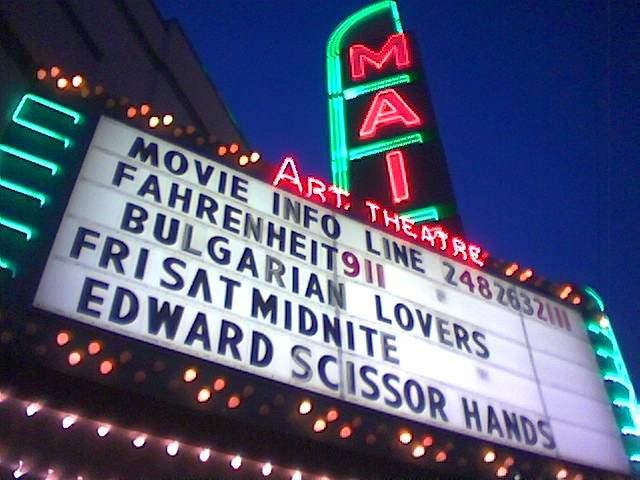
Not long ago, retailers in Royal Oak saw the large number of restaurants as a bad thing. In a 1998 article published by the MetroTimes, David
Jaskey, owner of the trendy clothing store Incognito, worried that the restaurants would cause too much
traffic congestion.
What pisses us off beyond and beyond and beyond is
this grotesque idea of that many restaurants on the same block… They
are going to choke themselves and they're going to choke other existing businesses.
[v]
In the same article, Keith Howarth,
owner of the niche retail store Noir Leather, expressed similar sentiments.
Pondering relocating to Pontiac, Ferndale or the Woodward corridor, Howarth
said he was tempted to "just
leave the city and let the corporate moguls take over."
[vi]
It is undeniable that niche retail, especially Howarth’s famous (or infamous) fetish gear/clothing
shop, helped put royal oak on the map; but people will travel to Noir Leather.
Shoppers will travel to patronize what particular store they wish, but
Royal Oak has shown that when it comes to entertainment, they want it concentrated.
In other words, location matters - they want the easy access to a “leisure hub.” This
perhaps explains the recent phenomenon of luxury condominiums in Royal
Oak. In a reversal of common practice, the entertainment has drawn the
people. With the downtown condos, people will demand some retail, but the
true drawing power will be the entertainment the city sells.
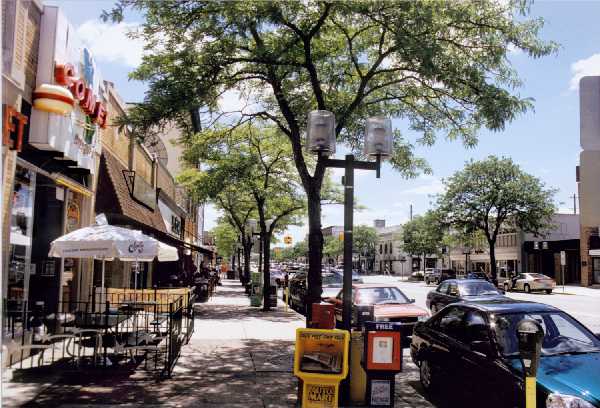
According to the City's downtown development plan, one of the steps that Royal Oak has taken to cultivate this dynamic downtown is to hire a Downtown manager. Part of the position’s job is to “encourage restaurants in close proximity to each other.” Another notable measure is the city’s decision to call for a “detailed market analysis” to “assist the City in developing an action plan that incorporates marketing and business attraction and retention…” The market analysis will be regularly updated, and has already alerted Royal Oak to the intense retail centers in surrounding areas, such as the Somerset Collection and Great Lakes Crossing, and the need to react accordingly. The document shows the City acknowledges that downtown retail business continues to decline while “restaurant and entertainment land uses” have grown stronger. Royal Oak sees it as a priority to retain these entertainment patrons as consumers for the retail market and have taken steps to coordinate business hours, encouraging retailers to stay open later in the evening.
City officials hope that the condominiums will give a boost to the downtown retail stores, but the effect may prove to be marginal. “Downtown retail is holding up, but businesses are seeing a decline in retail foot traffic during the day," said Jerry Dettloff, downtown manager for Royal Oak, in a 2003 Detroit News story about the condominiums. "Hopefully, this will help to take care of that."
[vii]
But a look at the website for one of these condominium developments, called “The Fifth Royal Oak,” shows that its major selling point occurs when the sun goes down.
Of course, residents living downtown will demand some retail shopping, but Royal Oak’s model shows that entertainment is what draws people in a large metropolitan region. The condominium residents may work in another city, do their grocery shopping at Costco, but in the evening, they will walk to the coffee house, then walk to their restaurant or night spot of choice. It was the nightlife that made them move there in the first place.
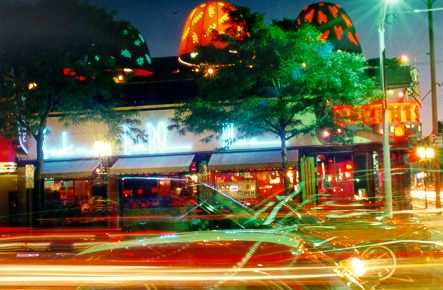
ABOVE: After sunset, Memphis Smoke at 11 and Main. Source: www.ci.royal-oak.mi.us/mp/historical/sld036.htm
[i] An article from the Oakland Business Review can be viewed at: http://72.14.203.104/search?q=cache:1jtQ6LUnMF8J:www.mlive.com/mbusinessreview/oak/index.ssf%3F/mbusinessreview/oak/stories/20051020_mtv.html+mtv+real+world+royal+oak&hl=en&client=safari
[ii] Kent A. Robertson, “Downtown retail revitalization: a
review of American development strategies” Planning Perspectives, 12 (1997) 383-401.
[iii] Paul Chatterton and Robert Hollands, “Theorising Urban
Playscapes: Producing, Regulating and Consuming youthful Nightlife Spaces,” Urban
Studies Vol. 39, No. 1, (2002): 95-116.
[iv] Jennifer Bagwell, “What’s Eating Royal Oak,” MetroTimes,” 29 July
1998.
[v] Ibid.
[vi] Ibid.
[vii] Gary Hoffman, “Royal Oak Condos Create Retail Buzz,” The
Detroit News, 14 August 2003.